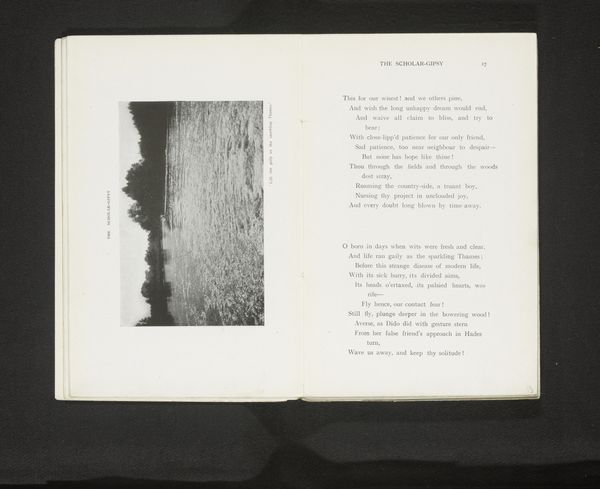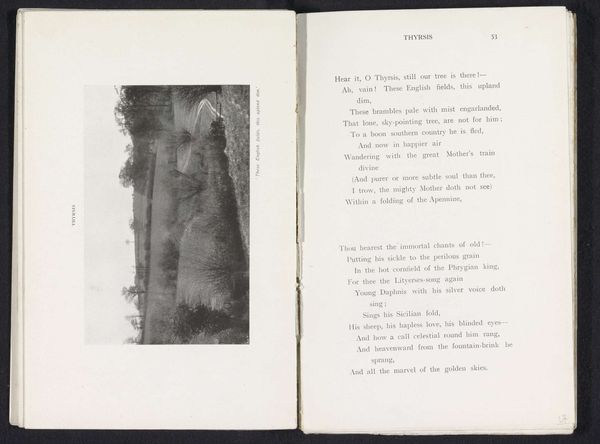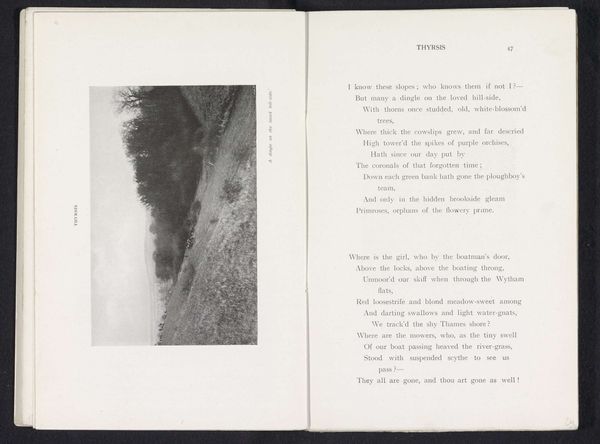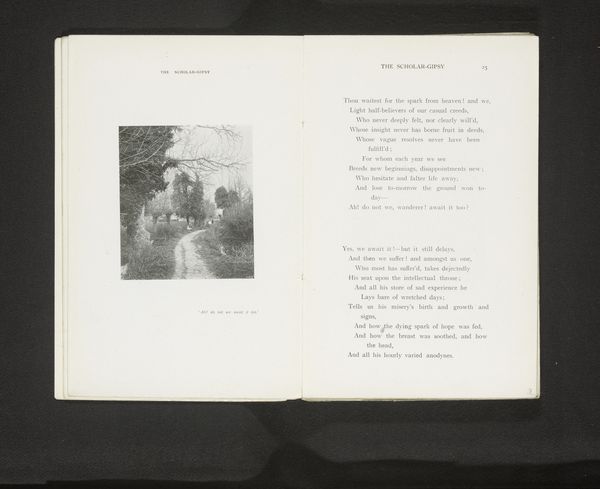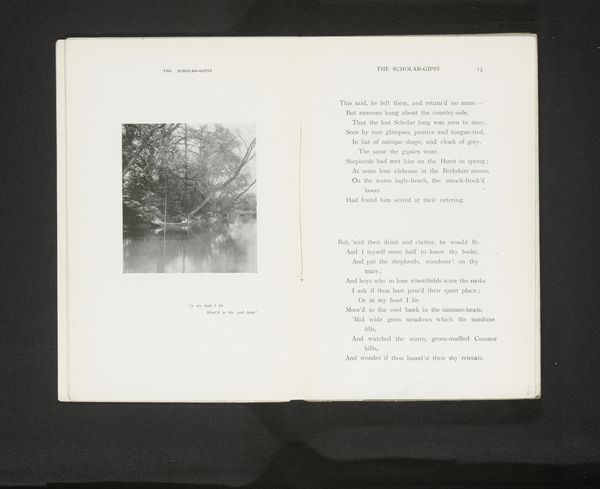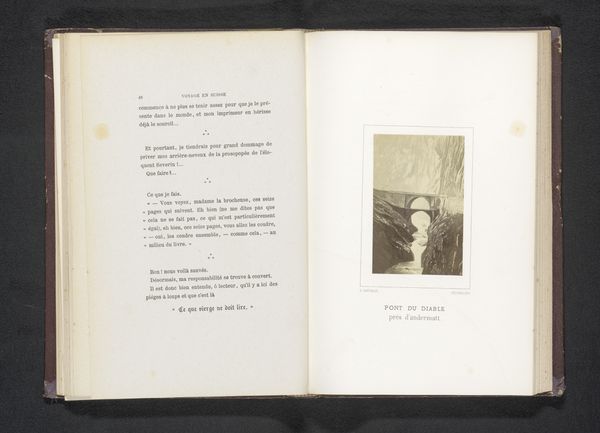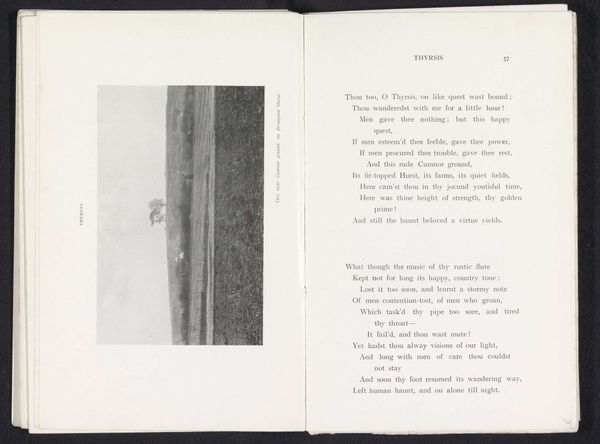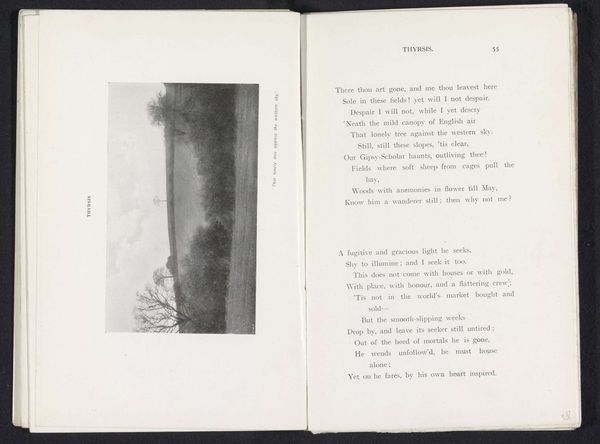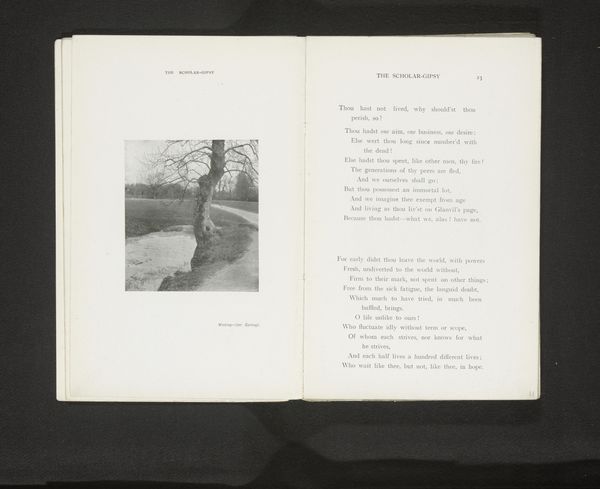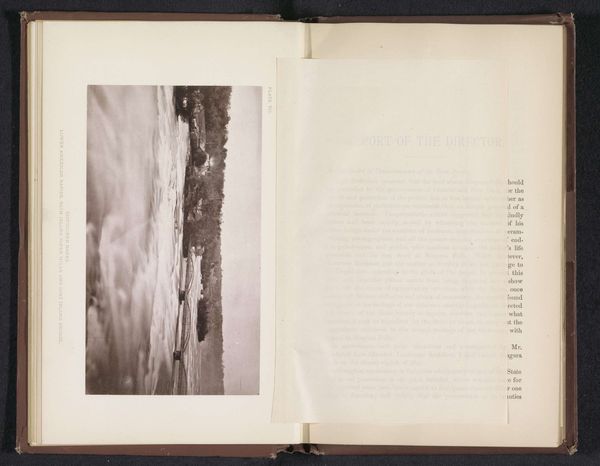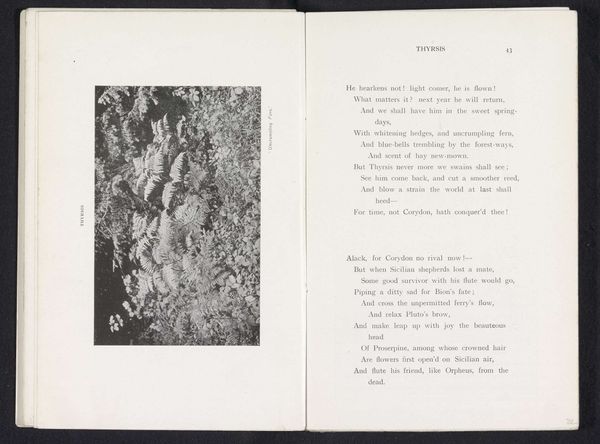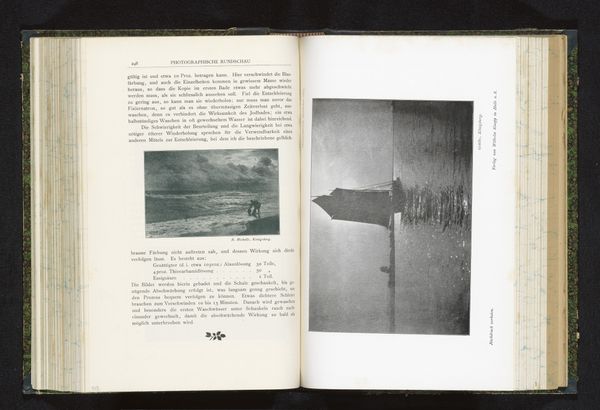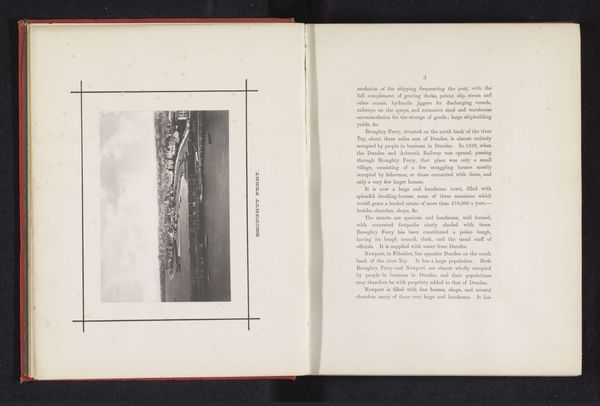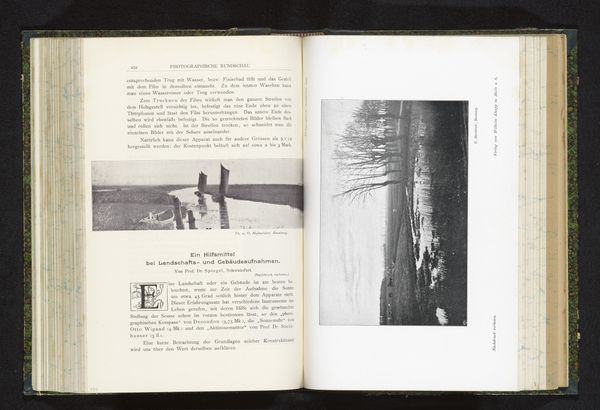
print, photography
# print
#
photography
#
sea
Dimensions: height 88 mm, width 139 mm
Copyright: Rijks Museum: Open Domain
Editor: We're looking at "Zeilboot op zee," a photograph from before 1912, by Henry W. Taunt. It’s quite simple – just a sailboat on the water, mostly gray tones. It seems almost like a document of a specific type of boat or maritime activity. How would you interpret this work? Curator: Let's consider the material conditions. It's a print, so it was likely reproduced, not a unique object in itself. The presence of the printed poem opposite the photograph within this book reveals its use: circulating knowledge and possibly promoting certain social ideals tied to maritime activity and British culture, indicated by the romantic verse. It moves beyond aesthetics, becoming a tool of cultural production and dissemination. What kind of labor was involved in creating this image, from taking the photo, printing the photograph, printing the verse, to assembling it into the book, and distributing it? These are critical factors that contribute to its meaning. Editor: So, you’re less focused on the boat itself and more on the production of the print? Curator: Exactly. The choice of subject is a decision, yes, but the reproduction process, its likely purpose as a tool of knowledge production or commodity is critical to its meaning. The materiality carries cultural meaning. What socio-economic structures are embedded in the practice of sailing? Editor: I never considered the photograph in the context of book production before; how different aspects of book creation contribute to its larger role. Curator: Thinking materially always allows us to challenge established conventions of what makes “art.”
Comments
No comments
Be the first to comment and join the conversation on the ultimate creative platform.
